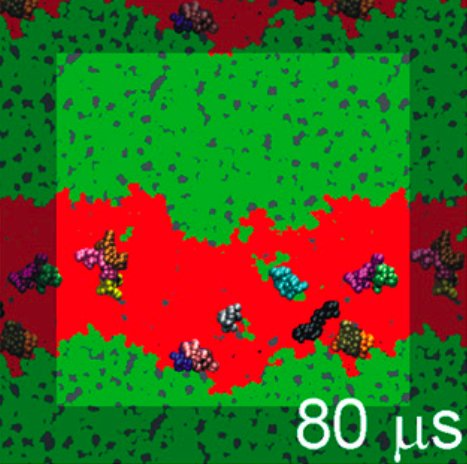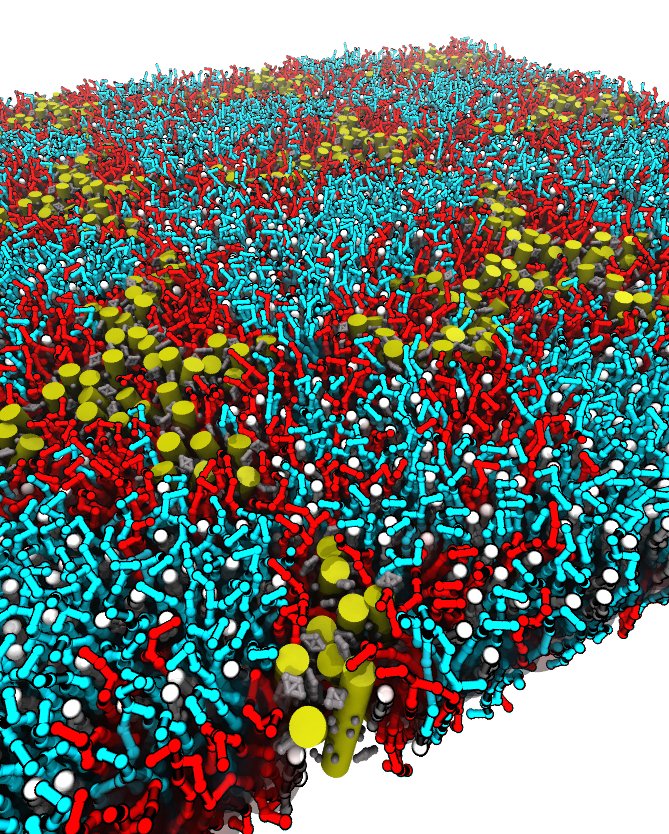Domain induced protein sorting
- Details
- Created: Thursday, 06 January 2011 00:00
- Last Updated: Monday, 19 August 2013 14:42

Publication in Proc. Nat. Acad. Sci. USA
Abstract: Cell membranes are comprised of multicomponent lipid and protein mixtures that exhibit a complex partitioning behavior. Regions of structural and compositional heterogeneity play a major role in the sorting and self-assembly of proteins, and their clustering into higher-order oligomers. Here, we use computer simulations and optical microscopy to study the sorting of transmembrane helices into the liquid-disordered domains of phase-separated model membranes, irrespective of peptide–lipid hydrophobic mismatch. Free energy calculations show that the enthalpic contribution due to the packing of the lipids drives the lateral sorting of the helices. Hydrophobic mismatch regulates the clustering into either small dynamic or large static aggregates. These results reveal important molecular driving forces for the lateral organization and self-assembly of transmembrane helices in heterogeneous model membranes, with implications for the formation of functional protein complexes in real cells.
See also: J. Domanski, S.J. Marrink, L.V. Schaefer. Transmembrane helices can induce domain formation in crowded model biomembranes. BBA Biomembr., in press, 2011.



























































































































































